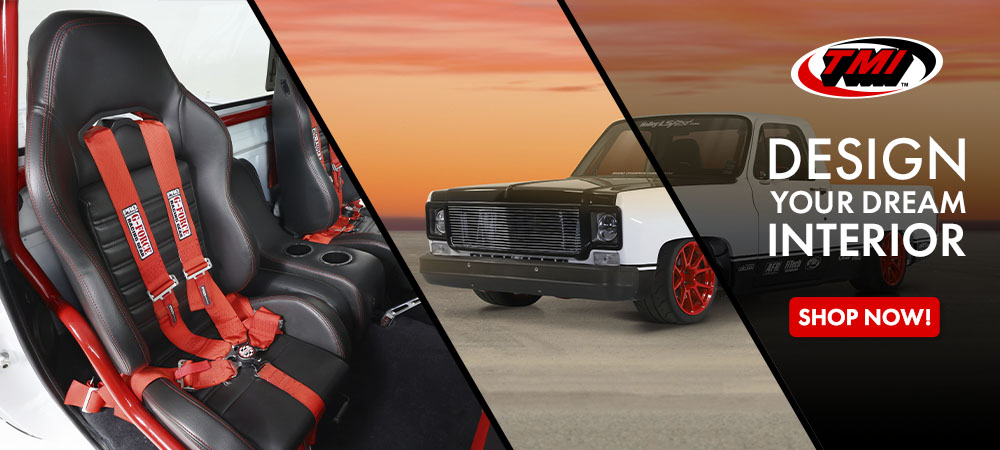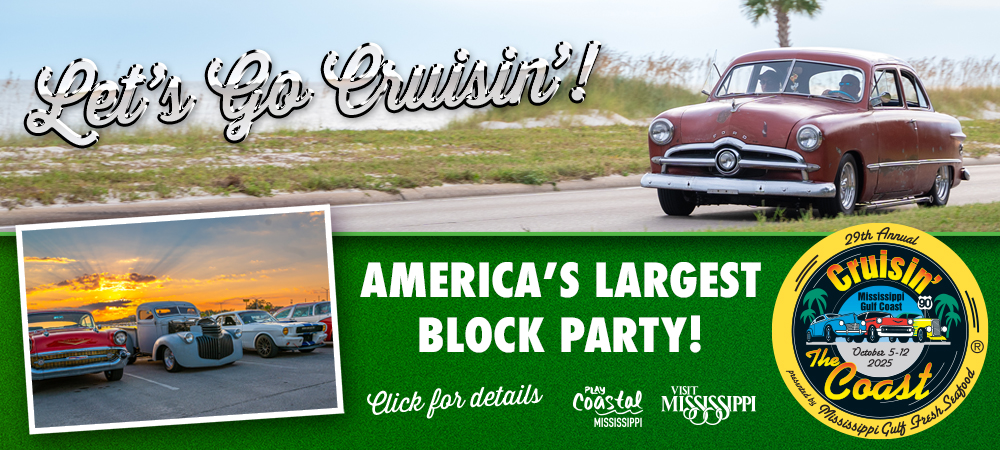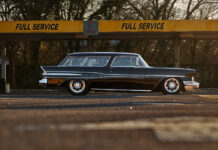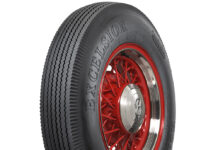Return to Vanishing Point: Assaulting the Nevada Desert in Kowalski’s Challenger … 50 Years Later
By Matt Stone – Photography by the Author & the Author’s Collection
(Editor’s Note: It’s hard to believe the cult classic film Vanishing Point is turning 50 years old, as it was released in theaters in March 13, 1971.)

Car chase movies were nothing new; the best ever, Steve McQueen’s Bullitt, was then but a few years old. Director Richard C. Serafian insists his Vanishing Point isn’t a drug culture flick, but instead a “tapestry of many different levels of Americana.” While that may be true, the film’s characters sure popped a lot of speed and smoked more than a few joints in the process.

The film’s principal characters are Kowalski (first name unknown), played by Barry Newman in only his second major film role, and a grumbling Dodge Challenger R/T 440 Magnum four-speed. Kowalski is complex; a has-been car and motorcycle racer, decorated ’Nam vet, and former cop. Having washed out of most of his previous careers, he now works as an over-the-road car delivery driver hired to safely chauffeur the white Challenger from Colorado to San Francisco. Newman was a solid choice—trim, blue-eyed, and handsome; he exuded somewhat of a darker-haired McQueenesque vibe.



Vanishing Point fanatics, Dodge clubbies, and chat room “experts” don’t quite agree on the number and specification of cars deployed and destroyed in the film. The most common opinions are that five different cars were used—and used up—during filming, four of them 440 Magnum four-speeds and one 383/automatic. Serafian refers to the use of eight cars, claiming that all but one were totaled in the process. The cars came from the PR offices of Chrysler, and while the car in the movie is white in a movie scene where Kowalski has a flat tire it’s apparent that the car is green, as the color can be seen in some of the closeups.



As the script called for all manner of automotive mayhem, Serafian engaged Carey Loftin, the shaman of action driving and stunt coordination in America at the time. Loftin could make cars fly and land with precision; his timing and car control well demonstrated in Bullitt. Another Bullitt production vet was race car builder/driver Max Balchowsky. (Hot rod aficionados will recognize this name. He designed and built nine Old Yeller/Ol’ Yaller cars. The first two were named after Old Yeller, a 1957 Disney film—and this editor’s favorite movie prior to the age of cars, which was around 10 years old. History tells us that Disney wasn’t fond of the name association so Balchowsky altered the name to read and spell “Ol’ Yaller”.) He performed relatively little mod work on the Challengers cued up for Vanishing Point. Most of his efforts took the form of repairing damage incurred during filming, and keeping the cars running and in one piece, reputedly often borrowing pieces from one to bandage another.



Another important cast member is a young Cleavon Little, in his first major movie role. Little, whom Serafian claims to have discovered on Broadway, plays Super Soul, a blind, clairvoyant DJ who becomes Kowalski’s muse, and communicates with him through the AM radio airwaves and some high form of ESP. Serafian dubs them soulmates—Soul refers to law enforcement as “the blue meanies” chasing Kowalski as he speeds through the desert. Little’s performance in Vanishing Point is convincing and spectacular.
Kowalski picks up the Challenger, plus a load of Benzedrine uppers, in Colorado and bets his drug dealer he can get to San Francisco in 15 hours, which underpins the mad cross-country chase. They elected to bring the chase to a fiery end in Cisco, California, a mostly abandoned town northwest of Lake Tahoe.



To photograph and drive Steve Foster’s convincing Vanishing Point clone in the right environment, we visited Goldfield, Nevada, a dusty mining town that wasn’t on Kowalski’s fateful route west, but which figured large in Vanishing Point as the home of radio station KOW and thus Super Soul’s “soultastic” broadcast and the site of a vicious, bigoted attack on Soul and his engineer. According to Virginia Ridgeway, epicenter of the Goldfield Historical Society, the city was home to more than 30,000 people during the Gold Rush, and is now populated by “250 characters.” When the multi-story, concrete-and-brick, now-abandoned Goldfield Hotel was built around 1910 it was clearly the town jewel. The production crew built up Super Soul’s studio in a portion of the ground-floor lobby.


Nearly as interesting as the big white Dodge is all the hot-rodding raw material lying about Goldfield. Random cars and parts sit in junkyards, while others are just lying about on vacant or semi-occupied lots, some with more recent housing, others docked by historic period buildings that still stand. There are complete ’20s- and ’30s-era cars, piles of bodies, chassis, frames, and grilles lying about with no particular sense of order, all sunning itself, and waiting either to be scrapped, to slowly and quietly return to the earth, or to be discovered by opportunistic rodders or restorers. Some is little more than junk, yet much of this vintage tin could be salvaged and repurposed into hot rods, customs, or restored classics.


The Challenger, an all-new model for 1970, was developed as Dodge’s cousin to the Plymouth Barracuda. Although Kowalski’s car was purportedly supercharged, the stock single-carb 440 Magnum big-block was good for 375 hp. Kowalski’s car was equipped with the iconic Hurst “pistol-grip” shifter stirring the four-speed manual transmission. The chassis was typical Mopar for the day; torsion bars up front with a live axle and leaf springs in the rear. The movie cars ran unmodified disc brakes up front, with drums out back, and steel, ventilated Dodge Rally wheels.
(photo 20 with captions)
Steve ’s car wasn’t born a 440-powered R/T, but has been transformed into one (and then some). The visual morphing is quite effective, with the proper hood, badges, and quad-rectangular tipped exhaust system all present and accounted for. Underhood is a warmed-over 440 running aluminum heads, spooling out more than 600 hp at the flywheel, and is backed by a TREMEC five-speed manual transmission; the overdrive Fifth gear allows for a relatively stout rearend ratio and relaxed freeway cruising.

Steve ’s husky big-block runs a large, single, four-barrel carb and keeps cool via an aluminum radiator. A semi-aggressive camshaft means a lumpy idle, instant throttle response, and a symphonic exhaust rumble (all brass with lots of tenor and bass). Although Goldfield sits at near 6,000 feet above sea level, the big motor never burped, fouled a spark plug, or otherwise missed a beat during our dusty drive, happy on a 50/50 mix of racing gas and pump-spec premium unleaded fuel.
To preserve the car’s period look and some of its feel, Steve most often runs a set of reproduction F60-15 bias-ply tires, Hotchkis has upgraded the Challenger’s suspension with massive antiroll bars, modern, high-tech shocks, and fresh bushings.
There is some ride penalty due to the stiffer underpinnings, but even those racy bits don’t completely compensate for the old-tech rubber’s squishy nature. There’s amazingly little grip offered by the bias-ply tires, so it’s no wonder Loftin and Newman (the actor drove some of the films stunts himself, doing several of its many burnouts) tossed the car around and spun it on a dime so easily and often.
Stop agonizing over Hemis; a well-tuned 440 Six-Pack is just as quick, and the single-carb 440 Magnum holds itself well and flies high.

Vanishing Point holds up, over time, in a kitschy kind of way, especially taken in context of the flower-powered era of its creation. The film has a clear beginning and a well-known and highly defined ending, but in between these points of demarcation, the plot is really a sometimes-confusing obstacle course through which the protagonists must navigate. You’ll see it as a wonderfully crazy romp through time, the deserts of the great Southwest, and a unique point in both film and societal history. If you love cult car movies, action, and stunt work, plus the destruction of countless old police cars, buy the DVD and crank up the surround sound. You won’t regret it. MR































